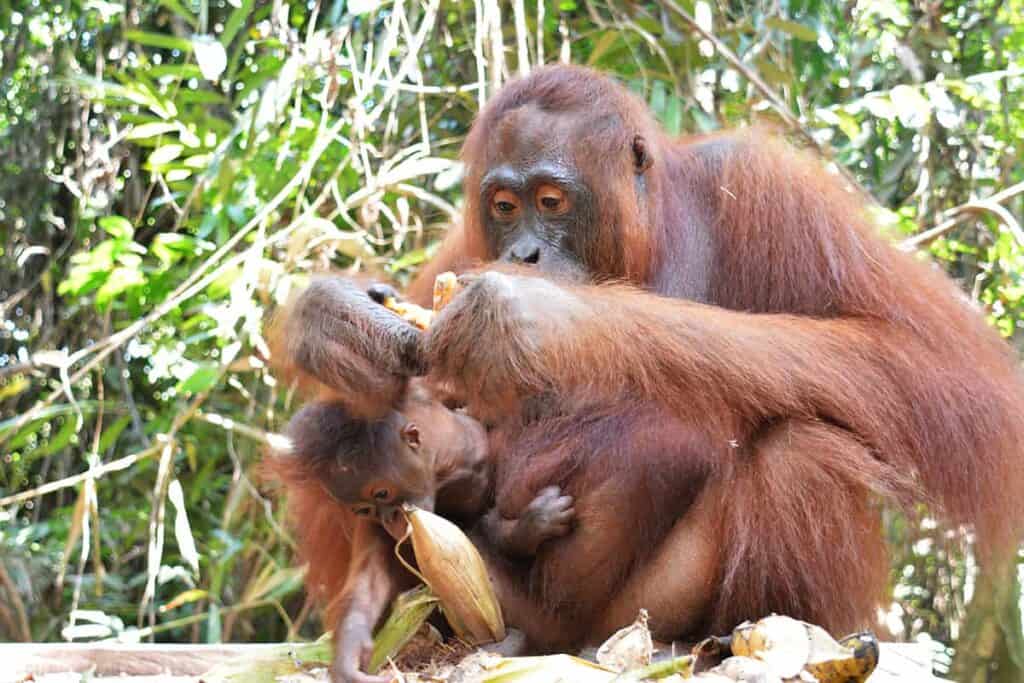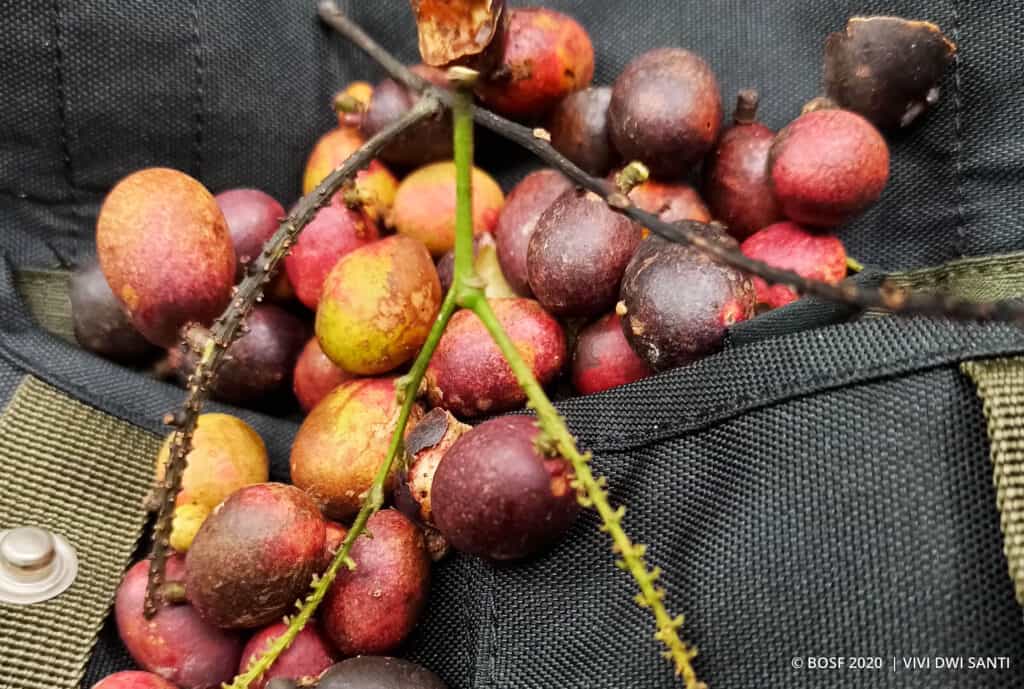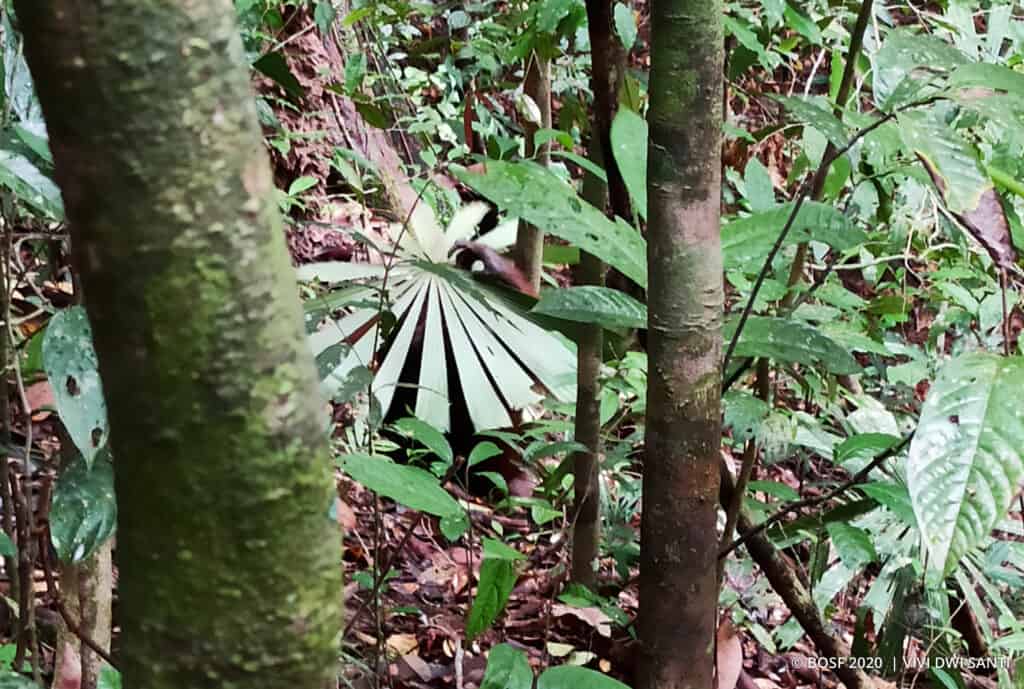Save the Orangutan has invested in improving the post-release monitoring efforts further in Bukit Baka Bukit Raya National Park (TNBBBR). One day in the rainforest, the post-release monitoring team found orangutan mother Vista and her baby Vee, both released in 2018.
Bukit Baka Bukit Raya National Park (TNBBBR) is one of the protected areas where orangutans from the Nyaru Menteng Rehabilitation Centre are released. At the end of 2019, TNBBBR was home to a new orangutan population of 161 released orangutans from Nyaru Menteng. Several of the released orangutans have been part of Save the Orangutan’s adoption program.
Therefore, we also have a special interest in following up on how the orangutans in the area are doing. Additionally, new knowledge about the released orangutans is important to continuously be able to improve the rehabilitation program and to protect the wild orangutans in the best possible way.
Based on this, Save the Orangutan has invested in making post-release monitoring in the area even better. In 2019, a new release area as well as a new monitoring camp was inaugurated in the TNBBBR National Park, with the support of Save the Orangutan. The staffing of the two monitoring camps, Bemban and Hiran, was increased and the camps received more and better equipment. This included camera traps, which will be used to collect information about the orangutans and the biodiversity in the area.

Observing Vista and Vee
The post-release monitoring team always have exciting stories from their observations in the rainforest. In March, for example, they met female orangutan Vista and her baby Vee, both released in July 2018.
Vivi Dwi Santi, a veterinarian at Nyaru Menteng, was with the monitoring team in the Bemban area that day. Here is her story:
“The forests of Bemban are extremely hilly and stretch across countless steep slopes. There were not many areas we could easily pass, and we had to walk up and down the rough terrain to find an orangutan.
Just before noon, we finally located Vista and Vee, and quickly set up our observation equipment to start collecting data on them.
Vista and Vee sat at the top of a tall tree. They were difficult to see without the use of binoculars. They enjoyed the fruit of the tree, which the locals call rosciu. During our observations, 3-year-old Vee moved slightly away from her mother but remained within safe distance. He occasionally looked at us as he played with the leaves and sipped them.

While eating, Vista and Vee dropped some rosciu fruits on the ground. Out of curiosity, the technician Domi and I decided to taste and discovered that the fruit was sweeter than usual! Thanks, Vista and Vee, for sharing this discovery!
When Vista got tired of fruit, she climbed down to the ground in search of termites while Vee clung to her stomach.
The next day we continued our observations of Vista and Vee. However, the weather was not as good as the previous day and the sky quickly became dark. While observing the two orangutans, we were hit by a sudden, heavy downpour. Vista quickly grabbed a leaf from a large Asian palmyra palm to cover his and his youngster’s head! The couple immediately sought refuge in the treetops and disappeared from sight. ”
